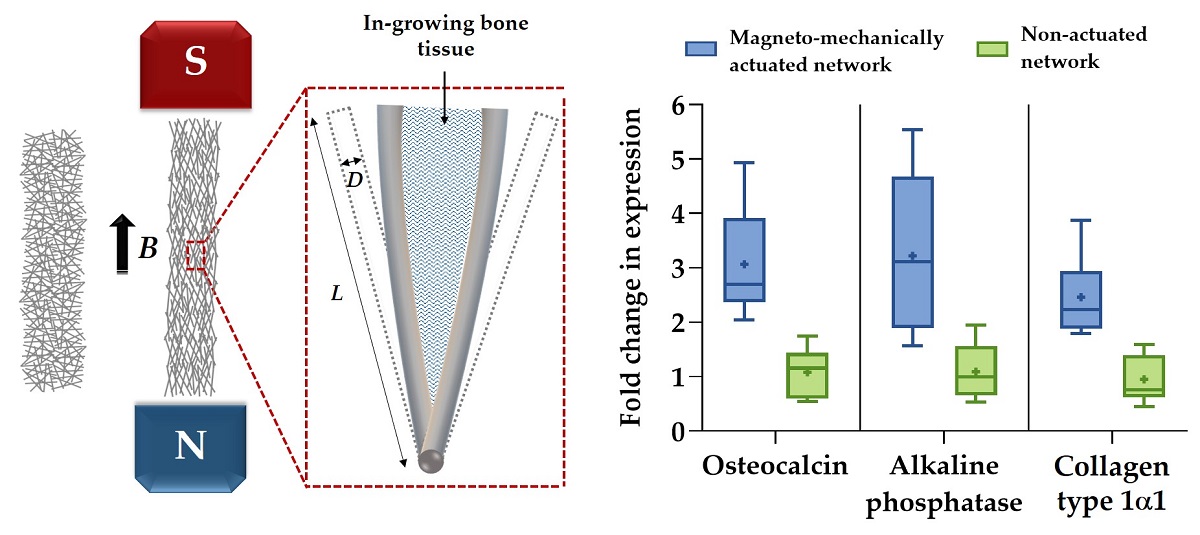There is currently an interest in “active” implantable biomedical devices that include mechanical stimulation as an integral part of their design. This paper reports the experimental use of a porous scaffold made of interconnected networks of slender ferromagnetic fibres that can be actuated in vivo by an external magnetic field applying strains to in-growing cells. Such scaffolds have been previously characterized in terms of their mechanical and cellular responses. In this study, it is shown that the shape changes induced in the scaffolds can be used to promote osteogenesis in vitro. In particular, immunofluorescence, gene and protein analyses reveal that the actuated networks exhibit higher mineralization and extracellular matrix production, and express higher levels of osteocalcin, alkaline phosphatase, collagen type 1a1, runt-related transcription factor 2 and bone morphogenetic protein 2 than the static controls at the 3-week time point. The results suggest that the cells filling the inter-fibre spaces are able to sense and react to the magneto-mechanically induced strains facilitating osteogenic differentiation and maturation. This work provides evidence in support of using this approach to stimulate bone ingrowth around a device implanted in bone and can pave the way for further applications in bone tissue engineering.

